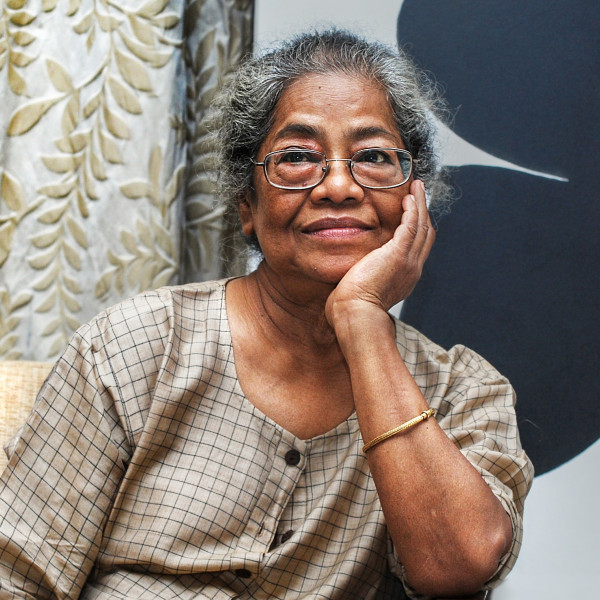Arpita Singh
ABOUT
"In life, both memory and forgetfulness are very important things."
Painter | India
Born in 1937

Arpita Singh is a pioneering Indian modernist celebrated for her distinct narrative-figurative paintings that blend autobiography, Bengali folk art, and socio-political commentary. Born in Calcutta, her early life, marked by the upheaval of Partition and a move to Delhi, instilled a sense of displacement and profound memory that fuels her work. She developed a unique, densely layered style characterized by an exuberant palette, seemingly childlike figures, and an intricate, patterned background reminiscent of Kantha embroidery (a skill she acquired while working at the Weaver's Service Centre). Her canvases function like illuminated manuscripts or fragmented maps, filled with recurring motifs: guns, clocks, cars, paper boats, floating human limbs, and lines of cryptic text, creating a world where time and gravity are fluid. The central subject of her art is the vulnerable yet resilient woman, often middle-aged or elderly. She portrays women in domestic settings, sometimes alone or in groups, grappling with love, aging, and subtle violence. Unlike overt feminist polemics, her women are complex figures—neither wholly victims nor idealized goddesses—but profound entities embodying the universal human experience. As she notes, "Everything I do is only a transformation of myself." Singh's art resists a singular reading, instead inviting the viewer to piece together meaning from her intricate, timeless universe of memory.
